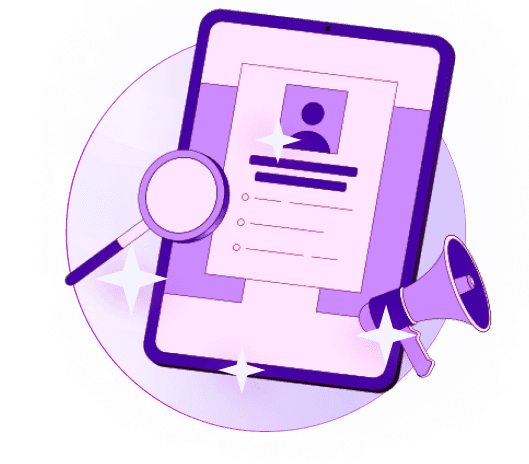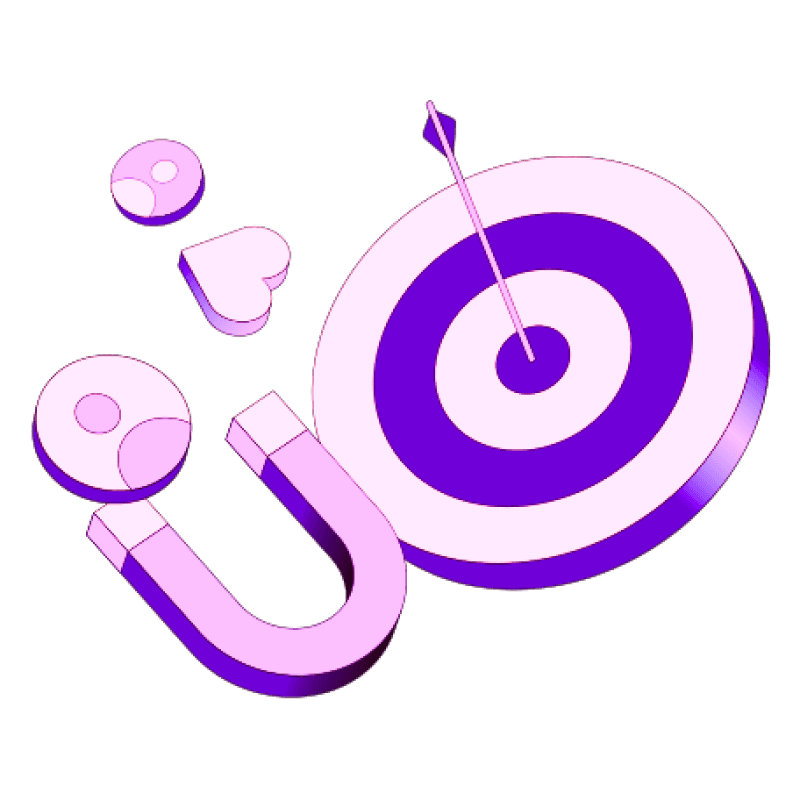Blogs
Articles

How to Build an AI Lead Generation System That Actually Works [Step-by-Step Guide]
The latest McKinsey Global Survey reveals a striking fact - 65% of organizations now use generative AI in their operations. AI lead generation is changing faster than ever, revolutionizing how businesses connect with and convert prospects.
This piece offers a detailed roadmap to build an AI lead generation system that delivers measurable results. You'll learn to pick the right AI tools and create automated personalization that resonates with prospects.
Step 1: Define Your AI Lead Generation Goals
Success in AI lead generation starts with clear objectives. Your goals are the foundations of using artificial intelligence effectively in lead generation. The wrong first step might leave you with great technology that doesn't solve your business problems.
Identify your lead generation challenges
Lead generation remains a major challenge for businesses. 61% of marketers call it the most difficult part of their job. You need to spot your specific issues before you start using any AI solution. Here are common challenges that come up:
Creating a lead generation strategy that works for your market
Getting accurate contact details for prospects
Starting relationships with new accounts from scratch
Getting quality leads instead of just more leads
The specific lead generation problem needs to be clear before you ask an AI tool. One expert points out that vague descriptions like "targeting decision-makers in tech" won't get you useful results—you need to be specific for AI to work.
Set measurable KPIs for success
Clear metrics must track your progress after you identify the challenges. Key performance indicators (KPIs) link technical abilities to business results and show AI's real value. Here are the KPIs that work best for AI lead generation:
Lead source attribution (which channels work best)
Lead response rate (how many leads respond to first contact)
Lead quality and value (possible revenue from each lead)
Conversion rate (leads that become customers)
Cost per lead and customer acquisition cost
These metrics should match your business goals. To cite an instance, if you want better conversion rates, your KPIs should focus on lead quality rather than quantity.
Understand your target audience
AI targeting looks at behaviors, interests, regional priorities, and demographics to shape marketing strategies. Your AI systems need detailed information about your ideal customers to get the best results.
The best way forward is to create detailed buyer personas with both numbers (age, job title, location, industry) and qualities (challenges, wants, common questions). You can utilize AI to study customer conversations from sales calls and find common themes and pain points.
Detailed personas help your AI lead generation system focus on prospects who are likely to convert. This saves resources that might be wasted on leads that won't move through your sales funnel.
Step 2: Build the Core of Your AI Lead Gen System
My AI lead generation system needs a strong backbone now that I've set my goals. The system's core structure will determine how well I can find, involve, and convert prospects.
Choose the right AI lead generation tools
My business needs careful thought when selecting AI lead generation tools. Studies show that businesses using AI for lead generation get twice as many leads compared to traditional methods. AI can also cut lead generation costs by up to 60% by targeting promising leads.
My priorities when evaluating AI lead gen tools should be:
User-friendliness and team adoption capability
Integration capabilities with existing systems
Scalability to match business growth
Customization options that match my target audience
Lyne AI, Smartwriter, and Instantly AI are popular solutions for lead generation. Each tool brings something different to the table. Lyne AI helps improve email deliverability and open rates, while Smartwriter makes it easy to create personalized emails.
Integrate with your CRM and data sources
A smooth connection between AI tools and my CRM system helps manage leads effectively. This blend creates data synchronization and gives a complete view of customer interactions and lead status. My team can track leads better and work together across departments when AI-powered lead generation tools connect with a CRM.
The core data sources I should connect are:
Company databases
Social media profiles
Email marketing platforms
Website analytics
Data validation processes help standardize data formats and remove duplicates. The revenue can grow up to 40% more when AI blends with CRM systems.
Ensure data quality and enrichment
Data quality shapes how well my AI lead generation system performs. Poor data quality causes 60% of AI failures. Building a reliable base for data quality is vital.
High-quality data needs these steps:
Automated validation checks to catch errors early
Regular data audits to spot and fix inaccuracies
Specialized data cleansing tools to keep data clean
Quality data creates meaningful lead generation insights. Complete audits help fix missing values, resolve inconsistencies, and remove duplicates that hurt targeting accuracy. Automated validation processes can monitor and maintain data integrity without manual work.
Step 3: Automate and Personalize Your Outreach
The system activation through automated, individual-specific outreach begins after establishing my AI lead generation foundation. This crucial step converts raw data into meaningful customer connections that drive conversions.
Use AI to score and qualify leads
AI-powered lead scoring analyzes customer data to predict which prospects are most likely to convert. Companies that use AI for lead qualification have achieved remarkable results:
Increased leads by up to 50%
Improved conversion rates by up to 47%
Reduced lead generation costs by up to 60%
Machine learning identifies shared traits among previously converted leads through predictive lead scoring, which eliminates guesswork in prioritization. Sales teams using AI report improved lead prioritization 98% of the time. These systems refresh scores automatically every 10 days to capture emerging trends and changing behaviors.
Set up AI-powered email campaigns
AI makes email outreach better through personalization at scale. The technology studies historical engagement patterns—such as open rates and click-through rates—to determine the best send times for each recipient. AI testing of subject lines maximizes engagement while creating multiple email versions tailored to different customer segments.
Messages can be scheduled based on specific triggers through automation to keep prospects engaged throughout the sales funnel. The data proves its worth: AI-powered dynamic content can substantially increase click-through rates and overall campaign performance.
Deploy chatbots for real-time engagement
Chatbots act as round-the-clock representatives for your business and respond instantly to interested potential leads. Research shows 82% of consumers would rather interact with AI chatbots than wait for a live representative.
These tools qualify prospects by asking targeted questions about budget, demographics, and specific requirements. Your sales team receives properly segmented leads while focusing on high-value interactions.
Use AI for content personalization
AI content personalization creates messages that match individual needs based on data analysis. This approach delivers hyper-relevant experiences at every touchpoint. Organizations that use AI personalization achieve five to eight times the return on marketing spend.
AI analyzes user interactions to spot trends and generates personalized recommendations that strike a chord with specific audiences. This capability goes beyond simple personalization to create dynamic content experiences customized for particular user groups.
Step 4: Optimize and Scale Your System
The real work starts after you set up your AI lead generation system. Success depends on how well you measure performance and fine-tune your approach. Let me show you how to optimize your system effectively.
Track key metrics like lead quality and conversion
Your AI lead generation effectiveness becomes clear when you monitor the right metrics. Here are the key measurements I track:
Lead quality score - Determines how likely a lead will convert based on specific criteria
Conversion rates - Companies using AI lead scoring report 35% higher conversion rates on average
Cost per acquisition - Businesses see up to 60% lower processing costs per lead with AI scoring
Time to conversion - AI can reduce lead processing time by 70% while improve accuracy
These metrics help me determine if the AI improves our lead generation efforts and delivers results. The team's morale gets stronger when we measure KPIs that support sales goals. This makes our optimization decisions based on data rather than guesswork.
Use predictive analytics for better targeting
Predictive analytics stands out as one of AI's most powerful capabilities for lead generation. It analyzes past data to find patterns that create successful leads across channels, activities, and campaigns.
My predictive models help me:
Identify factors that signal high-quality leads
Forecast customer needs to improve targeting strategies
Create targeted marketing campaigns based on customer behavior patterns
This method lets us generate leads proactively. We can optimize budgets and strategies based on actual insights instead of assumptions. Predictive lead scoring helps us focus on leads with the highest potential value.
Continuously refine based on performance data
AI lead generation needs constant optimization. My system evolves with market changes through regular monitoring and refinement.
AI dashboards track key indicators like response rates, engagement levels, and pipeline velocity in real time. Sentiment analysis helps gage prospect responses to measure interest and engagement. This information helps us refine our approach to create more positive interactions.
AI algorithms make forecasting and scenario planning possible. We can project how increased ad spend might affect performance and revenue. This gives us confidence when adjusting budgets.
Conclusion
A methodical plan and execution are crucial to build an AI lead generation system that works. This piece explores the key steps needed to create a system that delivers real results instead of just using technology without purpose.
Clear goals are the foundations of successful AI lead generation. Your understanding of specific challenges and target audience helps AI tools focus where they'll bring the best returns. Your system's effectiveness in identifying and reaching prospects depends on your core setup - choosing the right tools, connecting with your CRM, and keeping data clean.
Note that using AI for lead generation isn't a one-time task but requires ongoing improvements. My team and I have tested these methods thoroughly.
You can find many more AI-powered solutions for your industry at Persana.ai, where specialized tools wait to boost your lead generation efforts.

Create Your Free Persana Account Today
Join 5000+ GTM leaders who are using Persana for their outbound needs.
How Persana increases your sales results
One of the most effective ways to ensure sales cycle consistency is by using AI-driven automation. A solution like Persana, and its AI SDR - Nia, helps you streamline significant parts of your sales process, including prospecting, outreach personalization, and follow-up.



